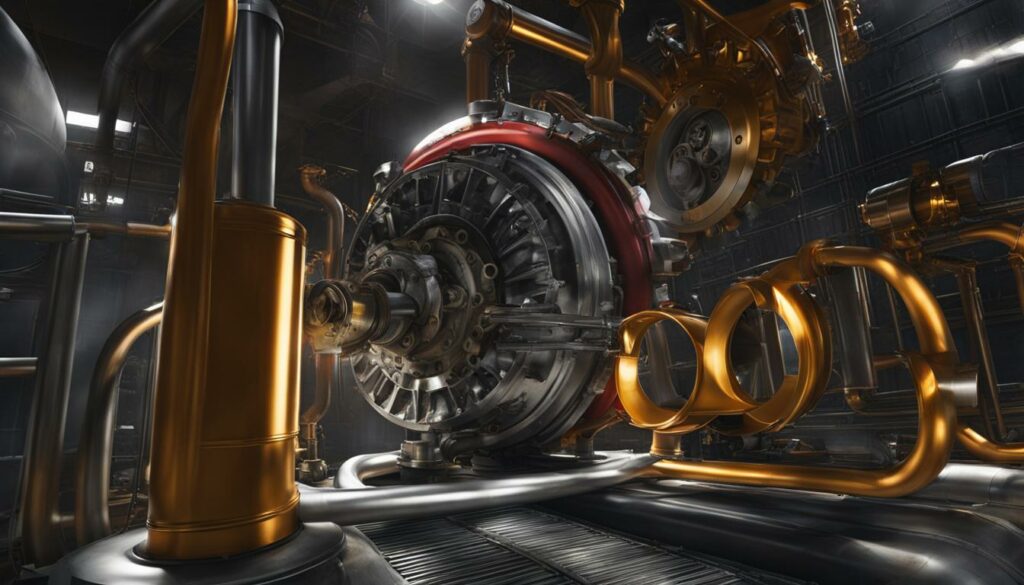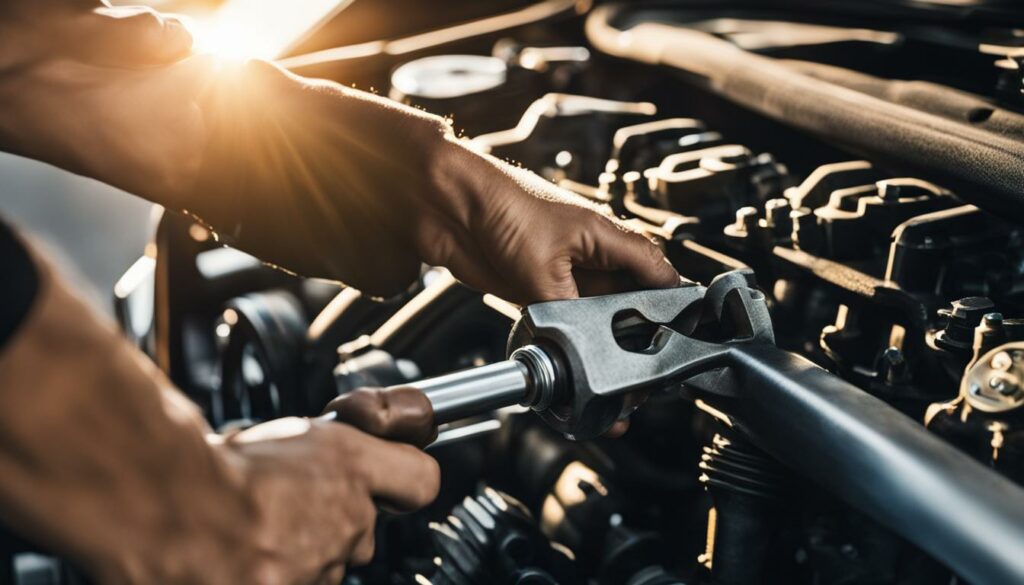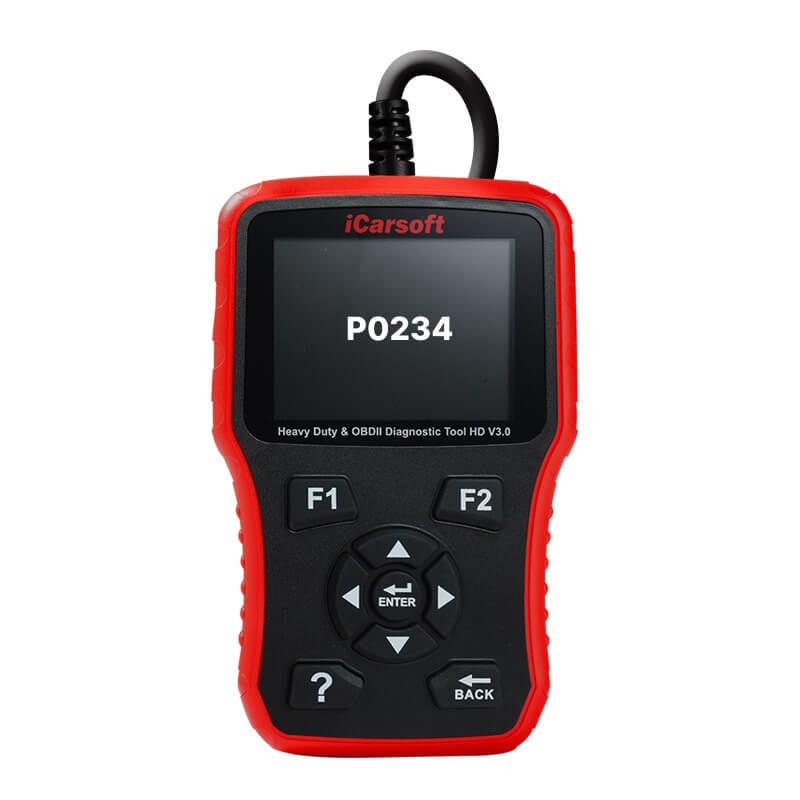P0234 – Turbocharger Overboost
POSTED IN pcodes
Welcome to our article about the P0234 OBD-II code, also known as Turbocharger Overboost. This code is triggered when the engine control module (ECM) detects dangerously high boost pressure levels in the turbocharger system. Ignoring this code can lead to severe engine damage, so it’s essential to address it promptly.
When the P0234 code appears, you may experience various symptoms, including the check engine light illuminating, engine misfiring, loss of power, overheating, and erratic transmission shifts. These warning signs should not be ignored, as they could indicate potential damage to your engine.
In this article, we will discuss the causes, diagnosis, and possible solutions for the P0234 code. We will also provide tips on how to prevent this code from occurring in the future. If you’re dealing with this issue, read on to find out how you can resolve it and keep your vehicle in top condition.
Key Takeaways:
- The P0234 code indicates a turbocharger overboost condition in the engine.
- Common symptoms include the check engine light illuminating, power loss, and engine overheating.
- The causes of the code can range from a sticking wastegate to faulty wiring connections.
- Diagnosis involves using an OBD-II scanner to scan for fault codes and conducting a test drive.
- To fix the code, potential repairs may include replacing the boost pressure sensor or addressing issues with the wastegate system.
What is the P0234 code and how serious is it?
The P0234 code is a generic OBD-II code that indicates an engine overboost condition. It is triggered when the ECM detects that the intake boost pressure exceeds the maximum specified pressure for a certain period of time. This code is considered severe as engines are not designed to handle overboost conditions, which can lead to catastrophic engine failure. It is important to get the vehicle diagnosed and repaired quickly to prevent further damage.
When the engine control module detects excessively high boost pressure levels, it generates the P0234 code. This occurs when the turbocharger or supercharger is delivering more boost pressure than the engine can handle. Overboosting can cause strain on the engine internals, leading to potential damage to components such as pistons, valves, or connecting rods.
Buy tested tuning file for Adblue / EGR / DPF / Adblue off now!
If the P0234 code is ignored or left unaddressed, it can result in severe engine damage, loss of power, or even engine failure. It is important to take the code seriously and address the underlying issue to prevent costly repairs or engine replacement.
Continued operation of the vehicle with the P0234 code can also negatively impact fuel economy and emissions, as the engine is not operating within its normal parameters. Additionally, the engine may experience reduced performance, hesitation, or surging under acceleration.
“The P0234 code is a serious issue that should not be ignored. Ignoring the code can lead to irreversible engine damage and costly repairs.”
To mitigate the severity of the P0234 code, it is recommended to have the vehicle diagnosed by a qualified technician as soon as possible. They will be able to identify the exact cause of the overboost condition and recommend the appropriate repairs. Diagnostics may involve visual inspections of the turbocharger system, checking for damaged components, inspecting for boost leaks, and utilizing diagnostic tools to monitor live data from various sensors.
It is crucial to remember that addressing the P0234 code promptly can save you from further engine damage and prevent potential safety hazards on the road. If your vehicle displays symptoms of the P0234 code or the check engine light is illuminated, seek professional assistance to diagnose and repair the issue.

Diagnosis and troubleshooting steps for the P0234 code
To accurately diagnose the P0234 code, there are several recommended steps you can follow. Whether you have access to an OBD-II scanner or prefer to take your vehicle to a trusted mechanic, these diagnostic procedures will help identify the root cause of the issue. Here’s what you need to do:
- Scan the system for other codes: An initial scan will provide valuable information about any additional fault codes present in your vehicle’s engine control module. This will help you understand if there are any underlying issues contributing to the P0234 code.
- Clear the fault codes: After scanning, it’s important to clear all the fault codes, including the P0234 code. This will allow you to retest the system and determine if the code returns.
- Conduct a test drive while reading live data: Take your vehicle for a test drive while monitoring live data on the OBD-II scanner. This will provide real-time information about boost pressure levels, engine performance, and other relevant parameters.
If the P0234 code persists after following these initial diagnostic steps, it’s crucial to inspect specific components related to turbocharger overboost. Focus on the following areas:
- Boost pressure solenoid: Inspect the boost pressure solenoid for any signs of sticking, damage, or blockages. A faulty solenoid can affect the wastegate’s operation and lead to turbocharger overboost.
- Wastegate: Check the wastegate for any physical damage or obstructions that may cause it to malfunction. A stuck wastegate can result in excessive boost pressure and trigger the P0234 code.
- Wastegate control hose: Examine the wastegate control hose for any blockages or leaks that could affect the wastegate’s functionality. A clogged or damaged hose can disrupt the proper operation of the wastegate, leading to overboost conditions.
- Connections and wiring to the boost pressure sensor: Ensure that all connections and wiring related to the boost pressure sensor are secure and free from damage. Faulty connections or wiring can result in inaccurate sensor readings, causing the engine control module to detect overboost conditions.
By thoroughly inspecting and troubleshooting these components, you can identify potential issues causing the P0234 code. Addressing these issues promptly will help you resolve the turbocharger overboost problem and prevent further engine damage.
| Component | Potential Issues |
|---|---|
| Boost pressure solenoid | Sticking, damage, blockages |
| Wastegate | Physical damage, obstructions |
| Wastegate control hose | Blockages, leaks |
| Connections and wiring to the boost pressure sensor | Faulty connections, wiring damage |
How to fix the P0234 code
If you’ve encountered the P0234 code indicating an engine overboost condition, don’t panic! There are several common repairs that can help you resolve this issue and get your vehicle back on the road. Here are some recommended solutions:
- Confirm the code: First, use an OBD-II scanner to confirm that the code is indeed P0234. This will ensure that you are addressing the correct issue.
- Replace the boost pressure sensor: A defective sensor can often trigger the P0234 code. By replacing it with a new one, you can rectify sensor-related issues and potentially resolve the code.
- Replace the wastegate: If the turbocharger or supercharger wastegate is malfunctioning, it may be causing the overboost condition. Replacing the wastegate can fix this problem.
- Repair or replace damaged wastegate hoses: Damaged or clogged wastegate hoses can disrupt the proper functioning of the turbocharger, leading to the P0234 code. Inspect the hoses carefully and repair or replace them as necessary.
- Replace the wastegate control solenoid: If the wastegate control solenoid is faulty, it can result in an engine overboost. Swap out the old solenoid for a new one to address this issue.
After each repair or check, take the vehicle for a test drive to ensure that the P0234 code does not return. If the code persists, it may be necessary to consult a professional mechanic for further diagnosis and troubleshooting.
Example Table: Repair Solutions for P0234 Code
| Repair Solution | Description |
|---|---|
| Confirm the code | Use an OBD-II scanner to verify that the code is P0234. |
| Replace the boost pressure sensor | Install a new boost pressure sensor to address sensor-related issues. |
| Replace the wastegate | Swap out the faulty wastegate to rectify turbocharger or supercharger issues. |
| Repair or replace damaged wastegate hoses | Inspect and repair or replace damaged or clogged wastegate hoses. |
| Replace the wastegate control solenoid | Install a new wastegate control solenoid to address solenoid-related problems. |
By following these repair solutions, you can effectively fix the P0234 code and ensure that your vehicle’s turbocharger operates smoothly without any overboost issues.
Note: If you are not experienced with vehicle repairs or if the code persists despite your efforts, it is recommended to consult a qualified mechanic for professional assistance.

Preventing the P0234 Code
Maintaining your vehicle’s engine through regular servicing is key to preventing the occurrence of the P0234 code. While this code is often linked to component failure, taking proactive measures can help you avoid turbocharger overboost issues.
Here are some preventive maintenance tips to keep your engine in good working order:
- Regularly Change Oil: Scheduled oil changes are essential for optimal engine performance. Clean oil helps lubricate the turbocharger and prevents buildup that can lead to overboost. Be sure to follow your vehicle manufacturer’s recommended oil change intervals.
- Replace Filters: Air and fuel filters play a crucial role in maintaining clean air supply and proper fuel mixture. Regularly replace these filters to ensure optimal airflow and prevent contaminants from damaging the turbocharger.
- Visually Inspect Wiring, Connectors, and Hoses: Regular visual checks can help identify potential issues with wiring, connectors, and hoses, such as damage, corrosion, or blockages. Addressing any issues promptly can prevent turbocharger overboost caused by faulty connections or clogged hoses.
By following these preventive maintenance practices, you can reduce the risk of encountering the P0234 code and extend the lifespan of your turbocharger. Remember, a well-maintained vehicle is less likely to experience turbocharger overboost issues.
Regular vehicle maintenance is essential for preventing turbocharger overboost issues.
Conclusion
In conclusion, the P0234 code is an indication of an engine overboost condition that can result in severe damage if not addressed promptly. It is crucial to diagnose and repair the underlying issues causing the code to prevent further harm to your engine.
Regular maintenance and inspections play a vital role in preventing the occurrence of the P0234 code. By following a regimen of servicing, such as oil changes, filter replacements, and visual inspections of wiring, connectors, and hoses, you can minimize the risk of encountering this issue.
If professional assistance is not readily available or if you prefer an alternative solution, there is an option to permanently remove the P0234 code by uploading the ECU file to a reliable portal. However, it is always recommended to seek professional advice and assistance to ensure the proper diagnosis and resolution of the code.
FAQ
What is the P0234 code and how serious is it?
The P0234 code refers to an engine overboost condition, where the boost pressure exceeds the maximum specified pressure for an extended period of time. It is considered a severe code as it can lead to engine damage if left unresolved.
What are the symptoms of the P0234 code?
Common symptoms of the P0234 code include the check engine light illuminating, engine misfiring, loss of engine power, engine overheating, and abrupt transmission changes.
What are the common causes of the P0234 code?
The most common causes of the P0234 code are a sticking or damaged turbocharger wastegate, sticking wastegate control valve solenoid, clogged wastegate control hose, and faulty connections or wiring to the boost pressure sensor.
How can I diagnose the P0234 code?
To diagnose the P0234 code, it is recommended to use an OBD-II scanner or take the vehicle to a trusted mechanic for a diagnostic check. The diagnostic steps include scanning the system for other codes, clearing the fault codes, and conducting a test drive while reading live data on the OBD-II scanner.
How can I fix the P0234 code?
The most common repairs to resolve the P0234 code include replacing the defective boost pressure sensor, replacing the turbocharger or supercharger wastegate, repairing or replacing damaged wastegate hoses, and replacing the faulty wastegate control solenoid.
How can I prevent the P0234 code from occurring?
Regular vehicle maintenance, such as changing the oil, replacing filters, and visually checking for issues with wiring, connectors, and hose blockages, can help prevent the occurrence of the P0234 code.


